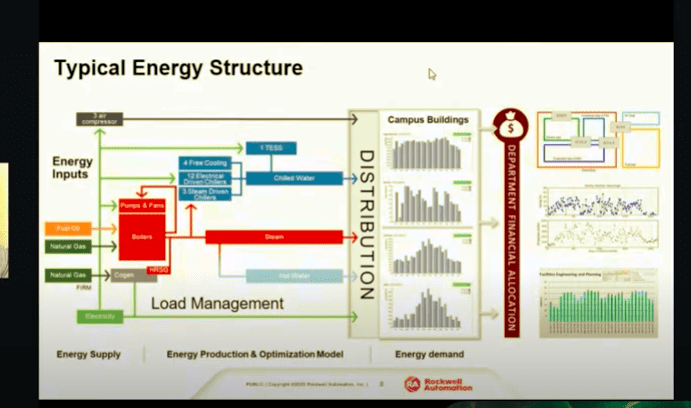Microgrids Increase Reliability, Resiliency
The post Microgrids Increase Reliability, Resiliency appeared first on POWER Magazine.

Increasing the reliability and resiliency of the electricity supply is a focus of today's power generation industry. In concert with that, more and more utilities, companies, and institutions are establishing internal clean energy goals, wanting to reduce their carbon footprint while ensuring a consistent supply of power for their operations.
An (date) session of Experience POWER, supported by POWER magazine, titled Microgrids-integration of CHP and Campus/Institutional Applications," looked at the incorporation of renewable energy technologies and microgrids into commercial and industrial settings. Energy industry experts discussed how microgrids can provide a flexible solution to meet generation needs with the incorporation of multiple technologies, including combined heat and power (CHP).
The session featured Frank DiCola, executive chairman and partner with DCO Energy. DiCola, who retired from his role as co-CEO earlier this year, was a driving force in growing DCO from zero projects to a respected leader in North American alternative power generation.
Tom McDonnell, global industry manager, power and energy industry at Rockwell Automation, discussed the role of microgrids in distributed generation. He and DiCola were joined on the panel by Klaus Payrhuber of INNIO Jenbacher. Payrhuber has more than two decades of experience in the power generation industry, and is currently a marketing manager. He provided information about microgrids for reliable combined heat and power and low-carbon emissions applications.
A Campus MicrogridDiCola gave an overview of the microgrid at Montclair State University in New Jersey. The Montclair microgrid is a public-private partnership, supported by a state stimulus program.
 Frank DiCola of DCO Energy provided a case study of a microgrid installation at Montclair State University in New Jersey. Courtesy: Experience POWER
Frank DiCola of DCO Energy provided a case study of a microgrid installation at Montclair State University in New Jersey. Courtesy: Experience POWERDiCola talked about the problems that DCO had to solve at the university.
It was an aging central plant with a very old cogen plant," he said. The entire steam distribution system was in poor shape. There was no chilled water distribution system. The campus was continually expanding and renovating buildings."
DiCola detailed the equipment in the new CHP system, including a Solar Taurus 5.4-MW gas turbine, with dual-fuel capability. He said the turbine was capable of supplying 75% of the campus' electric load, and 100% of the campus' thermal load.
Electrical Model ChangingMcDonnell noted how Rockwell works with both light industry and heavy industry, including hybrid markets. It give us a really great view of how our technology comes to bear within each of those industries. And because of that, we're on the front line of seeing how microgrids are being deployed with our technology across the space," he said.
One of the things that is key in this, is that we can see the model change in the electrical community," McDonnell said. Utility infrastructure has changed greatly in the past few years. Different technologies are coming into play. There are a lot of disruptive forces, a lot of competing forces coming into it."
Payrhuber said his company supplies gas engines for a broad range of applications," and has installed more than 6,000 engines running on renewable gas, like biogas, landfill gas, and CH (methane) gas." Paryhuber presented information about how a combination of technologies can sometimes be the best microgrid solution."
-Darrell Proctor is associate editor for POWER (@DarrellProctor1, @POWERmagazine).
The post Microgrids Increase Reliability, Resiliency appeared first on POWER Magazine.